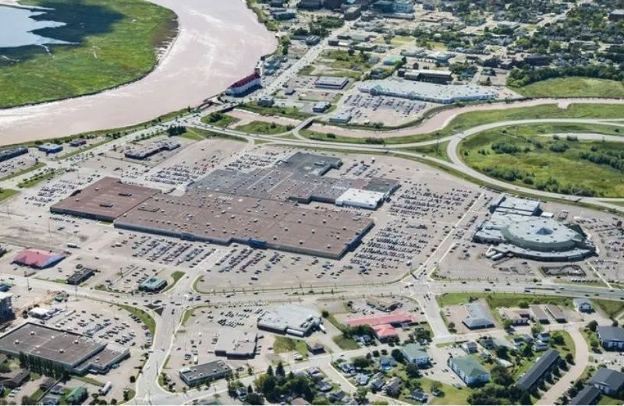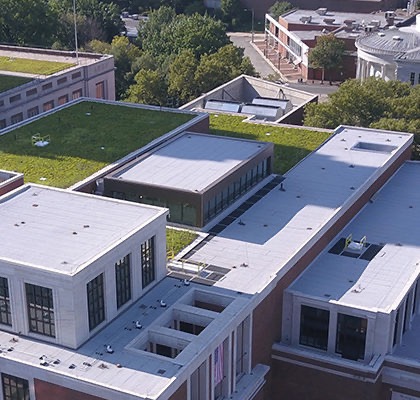The Enduring Advantage
The Living Building Challenge
The Living Building Challenge (LBC) is a philosophy, advocacy tool, and certification program that addresses development at all scales, with the core underlying principle that buildings should mimic nature and natural systems. Toxic materials (Red List Chemicals) are not permitted on projects and LBC aims to eliminate their use. A flower metaphor is used to illustrate how all elements of the built environment are rooted in place.
Administered by the International Living Future Institute (ILFI), LBC is a certification program and a framework for manufacturers to create products that are healthy and free of toxins, socially responsible and respect the rights of workers, and net positive and beneficial for both people and the environment. There are three pathways to certification: Imperative, Petal, and Full Living Product Certification. The Petals of the Living Product Challenge have specific Imperatives that define the actions needed to achieve that Petal:
- Place (Responsible Place, Habitat Exchange, Living Economy Sourcing)
- Water (Water Footprint, Net Positive Water)
- Energy (Energy Footprint, Net Positive Energy)
- Health + Happiness (Red List, Transparent Material, Health, Human Thriving)
- Materials (Responsible Industry, Regenerative Materials, Net Positive Waste, Net Positive Carbon)
- Equity (Ethical Supply Chain, Equitable Investment, Just Organizations, Social Co-Benefits)
- Beauty (Inspiration + Education, Beauty + Spirit)
Commercial roofing can support the Materials petal. Manufacturers have to provide documentation that products used are Red List-free.
WELL Building Standard
The WELL Building Standard™ is an evidence-based system for measuring, certifying, and monitoring the performance of building features that impact health and wellbeing, and is also the world’s first building standard focused exclusively on human health and wellness. The standard is divided into 10 concepts: air, water, nourishment, light, movement, thermal comfort, sound, materials (specifically dealing with material transparency), mind, and community.
End notes
1National Academies of Sciences, Engineering, and Medicine. 2011. Sustainability and the U.S. EPA. Washington, DC: The National Academies Press.
2Hays, S.P. 1987. “Beauty, Health, and Permanence: Environmental Politics in the United States”, 1955-1985 (Studies in Environment and History). Cambridge: Cambridge University Press.
3“Towards zero-carbon building”. Thought Leadership. Climate 2020. World Green Building Council. Accessed June 14, 2023.
4“2022 U.S. billion-dollar weather and climate disasters in historical context”. Accessed June 15, 2023.
5Ibid.
6“Fact Sheet 3.3.2: Low-Slope Roofs.” Hurricane and Flood Mitigation Handbook for Public Facilities. Federal Emergency Management Agency. Accessed June 15, 2023.
7Key Findings. American Lung Association® State of the Air 2023. . Accessed June 15, 2023.
8Ibid.
9"ERA Recommends Updated Approach to Mitigate Urban Heat Island Impact". Accessed June 20, 2023.
10“United States Green (Vegetative) Roofing Market 2022-2030: Post-Pandemic Rebound in Commercial Building Construction to Drive Market Growth.” ResearchAndMarkets.com. June 20, 2022. Berkshire Hathaway. Accessed June 20, 2023.
11Ibid
As a sustainability manager, Jeff leads the SOPREMA Group in developing sustainable processes with its products, systems, and technologies. He is a degreed civil engineer with over 30 years of practical experience working to innovate products and services across many markets in the construction industry.





